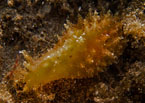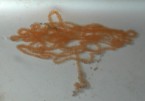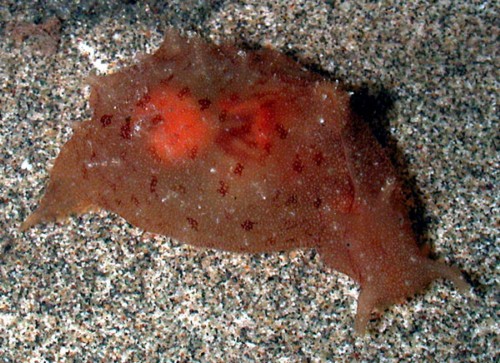_______________
Additional Photos

underside

front

solid spots

reticulated

prominent papillae

young, 5 mm

egg mass
_______________
GALLERY

|
Notarchus indicus Schweigger, 1820

Maximum size: about 38 mm.
Identification:
This
sea hare has fine papillae, some with white tips. The prominence of the
papillae may increase with age and vary with the amount of water in the
mantle cavity. The body is
translucent cream to red-brown with darker spots. The parapodia are
fused except for an anterior aperture.
Natural history:
Notarchus indicus
is a moderately common species found in rocky habitats and Halimeda kanaloana beds at depths
of < 1 to 110 m (< 3 to 328 ft). When disturbed, it swims
backward
via "jet propulsion" by forcefully expelling water from its mantle
cavity through the anterior aperture. A 25 mm animal laid a tangled,
orange-brown egg string that hatched in about eight days in the
laboratory.
Distribution:
Big Island, Maui, Oahu, Kauai, Midway and Kure: widely distributed in
the
Indo-Pacific.
Taxonomic notes:
It was first recorded in Hawaii from off Hale'iwa, Oahu by Terry
Gosliner &
Gary Williams in Oct. 1973 (dredged).
Photo: CP:
about 25 mm: found by PF; Airport Beach, Maui; March 22, 2003.
Observations and comments:
Note
1: ( )
|
|








